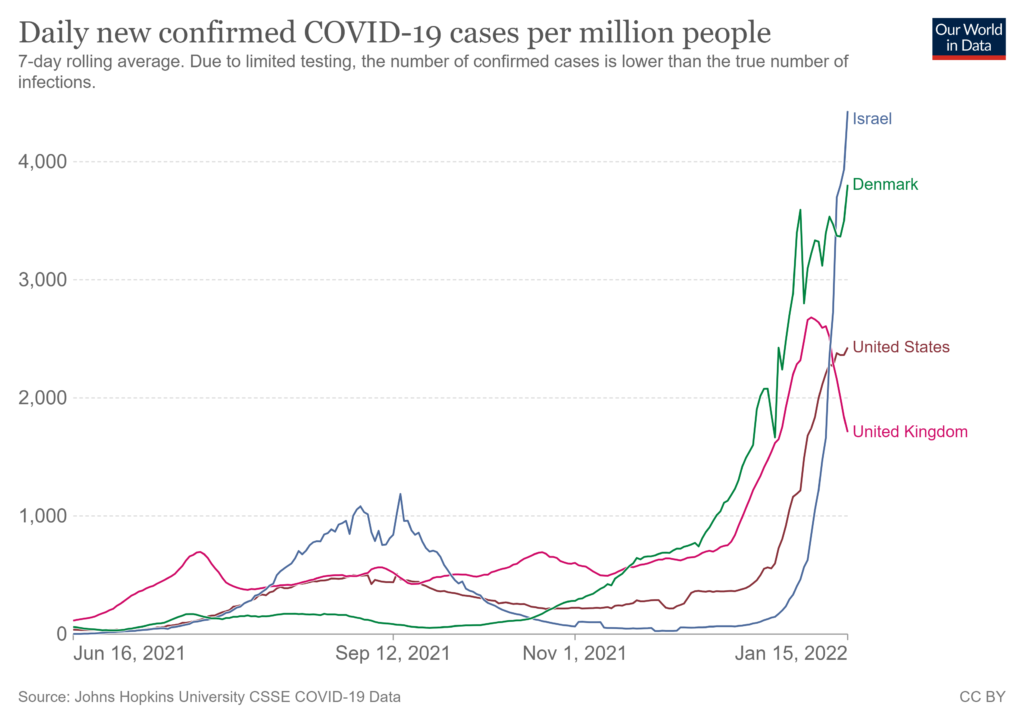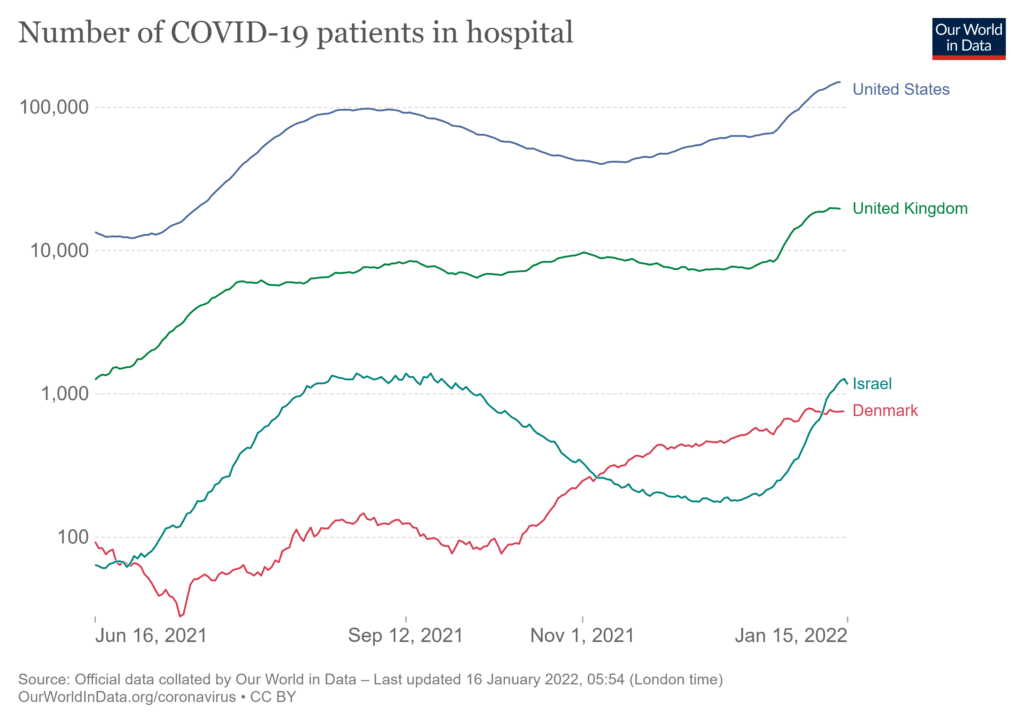Last week grocery, pharmacy, and other retail shelves were sporadically sparse. Many workers needed to make, move, and sell products were infected with coronavirus and/or seasonal flu. Many were sick. Some stayed home to protect others.
Flows slowed in several places.
There are plenty of anecdotes of workers — some vaccinated and some not — who continue to work despite mild symptoms of something flu-like. Many have purposefully decided not to be tested. For better and worse, they have been needed to maintain flows.
This week’s product flows are likely to be even more constrained than last week — in more places. In some places, such as the mid-Atlantic and New England, winter weather will further complicate delivery of goods and services.
This week or next will probably see the worst friction for US retail supply chains since, perhaps, April 2020 (potentially as nail-biting as March 2020). Most US urban centers are likely to hit peak omicron in the next ten days. Good news: It looks like NYC and New England may already be moving off their peak.
For several months this conversation has followed case-counts and hospitalizations for the US, UK, Denmark, and Israel. Below are these “demand curves” through Saturday, January 15. The UK’s dip in case counts is encouraging. Israel’s case count is a concern (but Israel’s transmission rate has started to decline). Hospitalizations (a more confident indicator for disease penetration of supply chains) will increase following peak case-counts. Omicron’s hospitalization rate and typical clinical outcomes have, however, been much lower than prior variants.
When and where Hours-of-Service waivers, suspension of delivery curfews, and lifting of other discretionary constraints are undertaken for weather-related or other causes, it would be helpful to extend longer than normal to mitigate supply chain constraints unfolding for the remainder of January.


+++
Since early December this conversation has encouraged proactive attention to reasonably obvious implications of omicron’s contagious reach and speed. I have been pleased with many measures undertaken. In this regard, I seem to be a distinct minority. Withering criticism has been the more common response (more). Lack of clarity has been an especially prominent complaint. When possible, clarity is a distinct virtue. But pretend clarity can too often be a self-interested manipulation of reality. For me, this is a meaningful working definition of evil. Reality can be — in my experience, usually is — complex. High volume, high velocity supply chains operating in a pandemic (or on most days) are complex. Embracing this complexity is a more honest and helpful stance than willful denial. Engaging complexity favors context-aware, time-sensitive, situational, provisional, frequently contingent choices. Ambiguity can be innate. Empirically demonstrated principles can be very helpful. Actively testing principled hypotheses will often move us forward. Engaging complexity favors courage. Effectively engaging complexity favors self-critical acceptance and rapid correction of error. These are the best tools for extricating meaningful clarity from emergent complexity. Since early December opportunities to extract meaningful clarity have been sacrificed at altars of pretend clarity. I regret this outcome. It is, however, an aspect of complexity that must also be embraced.